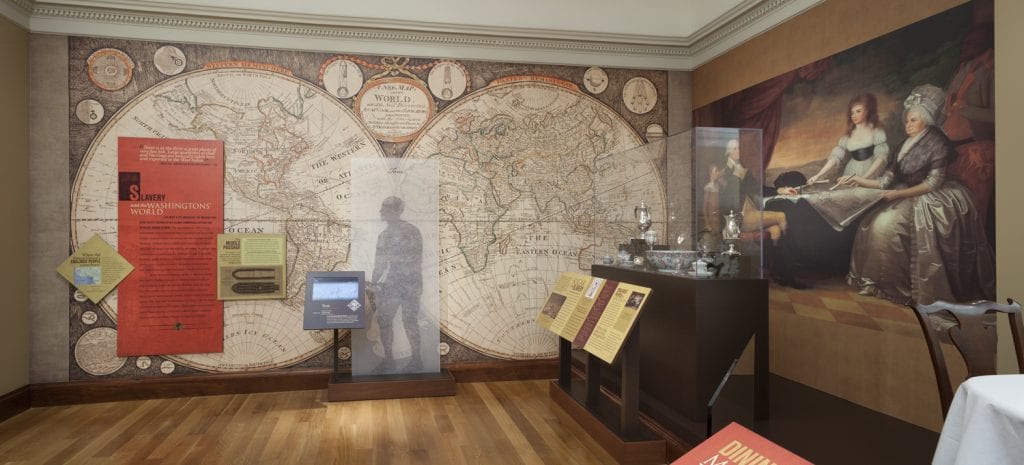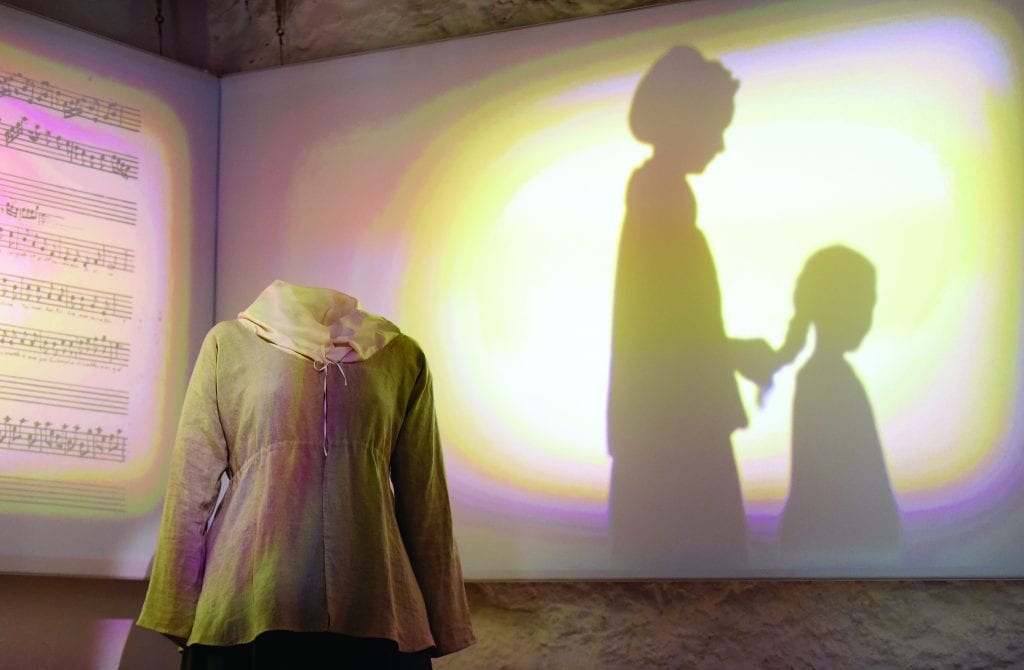
When an American president is occupying the office, it can seem impossible to fully understand the person behind the suit and speeches. In the years and decades after each presidency, however, we gain a fuller picture. One window into these presidents’ pasts is the presidential museum.
The homes of George Washington and Thomas Jefferson in Virginia are two of the most visited presidential museums in the nation, and they are a fascinating way for families to combine travel and historical learning. Both sites are known for their beautiful architecture and elegant gardens that hold complex tales of American history. Touring these historic sites with your family can help you talk with your children (depending on their ages) about our nation’s past in relation to our present.
Confronting a complicated past
Visits to presidential museums today are markedly different than a decade ago. History buffs seeking to learn about the architects of the Declaration of Independence and the Constitution and America’s democracy now also learn about America’s institution of slavery and displacement of native populations.
Four of the first five presidents of the United States, the Virginia Dynasty, share a tangled legacy of liberty and slavery. In this digital age, websites inform visitors of the re-interpretations of the historic house museums of these presidents. The George Washington Mount Vernon website states: “He [Washington] depended on their [slave] labor to build and maintain his household and plantation. They, in turn, found ways to survive in a world that denied their freedom.” A little preparation before your visit will help your upper-elementary-age kids, tweens and teens make the most of this learning opportunity.
A Peek into the first first family
Just 13 miles outside the nation’s capital, Mount Vernon houses the legacies of the Washingtons and hundreds of enslaved people. Traveling there, I passed Civil War battlefields and parks and trails, once home to indigenous people, until I reached a bluff overlooking the Potomac River. Crystal lights bounced on the water’s surface. It is a reflective place where histories meet.
By the time I got to the grounds, a light drizzle sprinkled tourists standing in line. Patient as they rocked strollers and removed bubblegum from youngsters’ mouths, the visitors observed the neatly proportioned brick buildings, a servants’ quarters for whites who were, unlike the enslaved people, paid for their service and the grand architecture of the main house Washington inhabited. A man asked: “Where did the slaves live?” The docent pointed to buildings that housed the enslaved men and women who prepared food, stoked fires and stitched clothing.
After peeking into the rooms where Washington ate and entertained visitors, I headed to the work houses. Here, parents can point out the distinct differences from the main house, including how un-comfortable the dormitory-style beds are. Several enslaved people would sleep in one bed, while spouses and children may have lived miles away. The work tools hinted at the sunrise-to-long after-sun-down nature in which enslaved people had to work.

A guide noted that the field laborers were situated much farther away. Beyond the main house, Mount Vernon features a whiskey distillery and grist mill. I headed to the education center and toured the “Lives Bound Together” exhibit, with furnishings, tools, paintings and panels that tell of Martha Washington and the enslaved people at Mount Vernon.
Audio from touch panels offered an expanded interpretation of plantation life by naming the enslaved people and offering descriptions of features, family life, work duties and small details that sketch these people with a human touch. Some of the people enslaved include Cesar, a literate field worker and preacher; Ona Judge, Martha Washington’s maid; Frank Lee, a server in President Washington’s military headquarters known for carrying the general’s spyglass; Kate, a field worker and midwife to enslaved women; Kitty, a dairy maid and spinner of yarn and cloth; and Sambo Anderson, a carpenter who wore rings in his ears made from Guinea gold. Many enslaved people fled or tried to flee. For Ona Judge, the Washingtons led a relentless search.
A sign at the African American cemetery restoration reads: “In memory of the many faithful colored servants of the Washington family buried at Mount Vernon from 1760 to 1860. Their unidentified graves surround this spot.”
Thomas Jefferson’s Monticello
About two-and-a-half hours southwest of Washington, D.C., and one hour west of Richmond, Va., is one of the most well-known and well-documented presidential museums, Monticello.
Re-examining Jefferson’s public and private life inspires note-taking on the steep climb from the David M. Rubenstein Visitor Center to the mountaintop house tour. I rested at a midpoint where Jefferson is buried. Inscribed on the stone is: “Author of the Declaration of American Independence and of the Statute of Virginia for Religious Freedom and Father of the University of Virginia.”
The sign outside the “Life of Sally Hemings” exhibit warns that the subject matter “can inspire strong emotions.” Standing in a small, dim room on the south side of the mansion next to the kitchen and food preparation rooms, and a room dedicated to the oral histories of descendants of Monticello’s enslaved peoples, is the room Sally Hemings, one of the women enslaved by Jefferson, occupied with her children. According to Monticello.org, “years after his wife’s death, Jefferson fathered at least six of Sally Hemings‘ children.”

The silhouette of a woman who could have been Hemings looms behind a mannequin dressed in plain clothes. The sparse-ness unsettled me, as did the sound of the shadowy violin. Based on Hemings’ son Mason’s memoir, the room speaks of Jefferson’s promises to free Hemings’ children. This is a complicated history that parents can broach with older elementary, middle school and high school children about the blurred lines between truth and re-corded history. Jefferson, who wrote the details of every transaction and quotidian things, recorded no such notes of his relationship with Hemings and didn’t acknowledge his paternity of her children.
Under the shade of mulberry trees on Mulberry Row, a guide said, “I’m going to talk to you about race, separating children, the brutality of slavery. If you feel you don’t want to hear about slavery, you can step away.”
Recently, Yelp reviewers protested discussions of plantation slavery. The folks on our tour saw it differently. They were travelers from across the country who admire Jefferson as a statesman and inventor, but who wanted to hear the full truth. In view of the rebuilt cabins and reconstructed lives of enslaved people, visitors discussed the enslaved and enslavers. The guide explained that enslaved people built the original cabin homes, planted and tended a terrace of vegetables and made nails and textiles with no payment for their labor.
There were more questions. Some, the guide answered. Some can never be answered.
Darlene Taylor is a Washington, D.C. writer, cultural arts advocate and founder of INKPEN, a nonprofit that aims to connect writers and readers.
A Learning Experience for Children
For the history traveler of any age, Monticello and Mount Vernon present paradoxes and tough questions. Situated in nature’s beauty, these houses hold stories, and they are places of contemplation, learning and exploration.
Monticello offers daily family-friendly tours to experience its garden and grounds in spring and summer. Monticello’s Children’s Brochure and the Griffin Discovery Room help children learn about Thomas Jefferson’s ideas, inventions and home, slavery and daily life on Mulberry Row and the wider plantation. Special 40-minute guided tours feature hands-on learning where children can tinker with inventions from the 1800s. At Mount Vernon, the “Lives Bound Together” exhibit teaches about the families of people enslaved at Mount Vernon and George and Martha Washington’s family life. The Hands-on History Center and permanent exhibition feature kid-learning activities such as story hours and crafts. Youth can hear the sounds of the Ameri-can Revolution by listening to Mount Vernon’s resident fifer and drummers.

For more on family visits, check out Mount Vernon’s website at www.mountvernon.org/plan-your-visit/things-to-do/interest-by-interest/things-to-do-with-kids, and Monticello’s website at www.monticello.org/visit/family-friendly-activities.
Exploring Presidents Closer to Home
If you’re looking for presidential museums closer to home, you can visit the Richard Nixon Library and Museum in Yorba Linda and the Ronald Reagan Presidential Library in Simi Valley.
While Nixon’s presidency will always be remembered for the infamous Watergate scandal, the Nixon Library (nixon-library.gov) offers a broader look at the 37th president. Born in Yorba Linda to a family of modest means, Nixon holds the distinction of being the president who is buried closest to his birthplace. You can visit his childhood home, a California bungalow, and the gravesites of Nixon and his wife, Pat Nixon, which are on the property.
The library holds permanent and temporary galleries, and the Nixon Presidential Materials Collection contains approx-imately 46 million pages of documents, 3,700 hours of re-corded Presidential conversations known as the “White House Tapes,” 4,000 separate recordings of broadcast video, nearly 4,500 audio recordings, 300,000 still photographs, 2 million feet of film and more than 35,000 state and public gifts. While young children might not be interested in this kind of research, sharing with them the manner in which a president’s life is recorded can be a great conversation.
In Simi Valley, the Ronald Reagan Presidential Library (reaganlibrary.gov) sits on top of a mountain with breathtak-ing views of the valley and ocean. The 300-acre site houses more than 60 million pages of documents, 1.6 million photo-graphs and a half million feet of motion picture film, in addition to tens of thousands of audio and video tapes. Families can explore Reagan’s careers as a Hollywood actor, California governor and the 40th U.S. President.


























